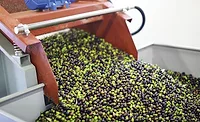TECH FLASH
Maintaining an agile, efficient supply chain
Having a plant that incorporates automation and accounts for demand and compliance data can help control supply chain costs.
An organization’s success is greatly dependent on how it manages the many moving parts of its supply chain. Effective supply chain management is all about delivering the right product in the right quantity in the right condition with the right documentation to the right place at the right time for the right price. However, managing and controlling supply chain costs while maintaining efficiency can be challenging.
Flexibility in supply chain management is critical as changes in market demand, vendor offerings, material processes and regulations, just to name a few, continue to put a strain on supply chain processes. In the face of these pressures, how can your supply chain remain agile and efficient?
At PACK EXPO International—which will be held Nov. 6-9 at McCormick Place in Chicago—supply chain solutions for food and beverage processors will be on display in the Processing Zone. Consider the following ideas designed to help processors streamline their supply chain, maintain compliance with food safety guidelines and improve productivity, all while managing costs.
Automate: The importance of an efficient supply chain cannot be overestimated. The first step in this process is to automate. Most supply chain processes are made up of multiple repeating steps. The more steps and procedures you can automate within your supply chain, the less room for human error.
But automation is not always easy. First, explore the available technology. From handheld barcode scanners to tablets, manufacturing supply chain technology is always evolving, and using the best tools for the application can help improve efficiency.
In food and beverage operations, data is king. Collecting information related to shelf life, inventory counts and future demand in one location will help maintain the flow of materials and products throughout your manufacturing operation.
Create detailed processes. The more detailed the processes, the more consistent they become and the easier to automate.
Plan for future demand: Taking a proactive approach to address the future food and beverage supply chain will result in a reduction of surprises, shortages and unnecessary spending. When planning for future demand, consider variables including market fluctuations, changes in customer base and material costs and availability.
Maintain regulatory compliance data: Few industries face the regulatory scrutiny of food and beverage, particularly with the implementation of the Food Safety Modernization Act (FSMA). To maintain compliance with food and safety guidelines, it is important to gather precise data, track everything and maintain historical records.
Control costs by minimizing waste: Many supply chain costs are difficult or impossible to control, including fuel rates, labor and material costs. With that in mind, explore areas where costs can be controlled, such as costs related to material waste. When looking to minimize waste, consider strategies such as managing expiration dates, avoid overstocking, addressing quality issues and altering production sequences.
Managing the many pieces involved in a complex food and beverage supply chain requires a great deal of effort, but is essential to ensuring efficiency, profitability and safety.
Find ideas at PACK EXPO International
Supply chain efficiency can be achieved by sourcing the latest technologies. Food and beverage processors can find solutions at PACK EXPO International co-located with Pharma EXPO. Together, the shows will feature more than 2,500 exhibitors and draw 50,000 attendees. In addition to exhibitors demonstrating the latest equipment and material innovations, attendees will have access to the Innovation Stage and its free educational sessions led by industry leaders.
Looking for a reprint of this article?
From high-res PDFs to custom plaques, order your copy today!






